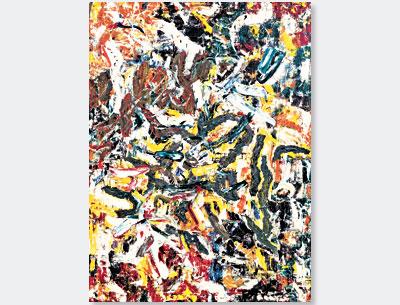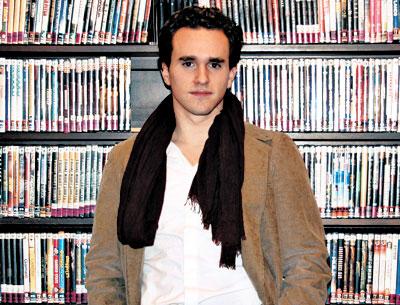The Art Scene: 01.10.13
The Art Scene: 01.10.13

Saunders’s “Long Now”
“Christopher Saunders: The Long Now” will open at Glenn Horowitz Bookseller in East Hampton on Saturday with a reception from 6 to 8 p.m. “The Long Now” refers to a term used by Brian Eno: “The precise moment you’re in grows out of the past and is a seed for the future. The longer your sense of Now, the more past and future it includes.” In the painting “The Long Now,” from 2011, three horizontal planes, implying different states of place or time, are merged.
Mr. Saunders, who lives and works in Brooklyn, has shown previously at the Silas Marder Gallery in Bridgehampton and with Hiroyuki Hamada in Rhode Island. According to the artist, his current work employs clouds in an aggregate symbolic manner, representing a sense of place and the sublime and using multiple sources to gather references to “sky, pollution, smoke, explosions, plumes, swarms, and overexposed film” in a collaged composition.
He received an M.F.A. from Rutgers University and was a 2010 fellow in painting at the New York Foundation for the Arts. The exhibition will be on view through Feb. 23.
Harms and Antonakos
The Drawing Room gallery in East Hampton will present two solo shows of work by Robert Harms and Stephen Antonakos, beginning Saturday and running through March 3. Mr. Antonakos will show work from the 1960s to 1970s in which light, space, and color are brought to geometric forms. Mr. Harms is showing new paintings that also incorporate light, as well as derived from the natural world.
In addition to his drawings, Mr. Antonakos is known for his neon installations, panels, and site-specific public works. Included in the show will be two neon wall sculptures and two groups of drawings that examine the relationships among geometry, architecture, and the white field of the page.
Mr. Harms also uses the whiteness of the page or canvas as a compositional element in his delicate and balletic but richly colored abstractions of the world outside his studio on Little Fresh Pond in Southampton.
Tripoli in N.Y.C.
The Tripoli Gallery in Southampton will open a pop-up New York City space at 980 Madison Avenue on Wednesday with an exhibition of work by Lola Montes Schnabel. An opening reception will be held from 6 to 8 p.m.
“Within Reach,” the title of the show, refers to a series of oil paintings and watercolors that “evoke oceanic realms whose landscapes and figures remain ceaselessly ephemeral yet always connected, bound by a kindred condition.” The paintings have a narrative element that reflects Ms. Schnabel’s background in filmmaking.
According to the artist, “Looking at a painting presents a chance to stop thinking . . . you enter an unknown space that eventually belongs to you. Without taking a step forward you are transported to a plateau or an arena, an invented place where the artist lives.”
Ms. Schnabel, a part-time resident of Bridgehampton, graduated with a bachelor’s degree in fine arts from Cooper Union in 2008. Her work spans various mediums, including film, photography, printmaking, and painting. She has exhibited her work locally and internationally.
The show will remain on view through Feb. 11.
Morley Speaks
Starting tomorrow, Malcolm Morley will lead a new series of monthly Friday evening talks at the Parrish Art Museum in Water Mill called “The Artist’s View.” He will discuss his current Parrish exhibition in the galleries beginning at 6 p.m. “Malcolm Morley: Painting, Paper, Process,” which is on view through Sunday, explores the role of paper in his art-making process and includes more than 50 works from 1983 to the present.
Mr. Morley was born in London in 1931 and attended the Camberwell School of Arts and Crafts and the Royal College of Art before moving to New York in 1958. He has lived in Brookhaven since the 1980s. The talk costs $10, free for members. Reservations in advance are a must because space is limited to 45 people.



